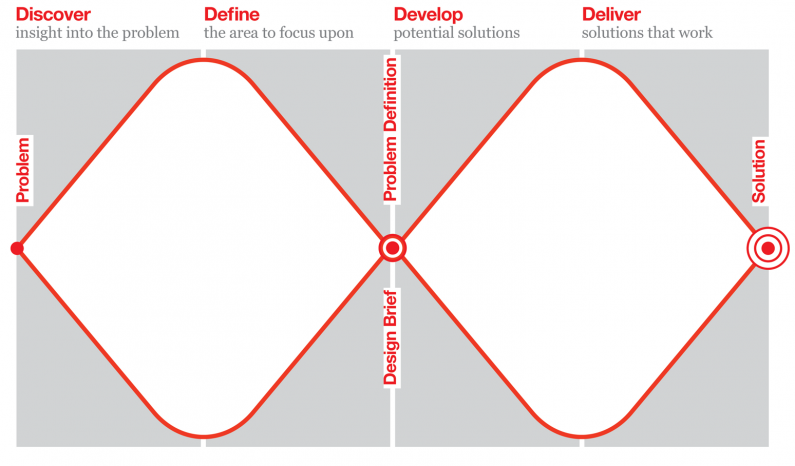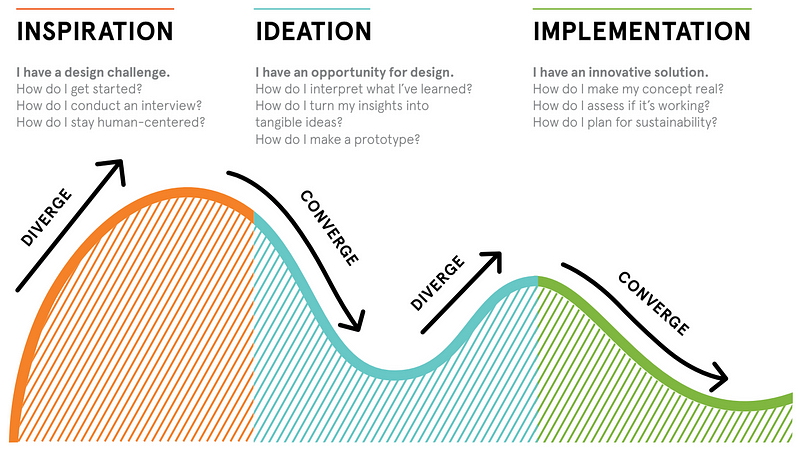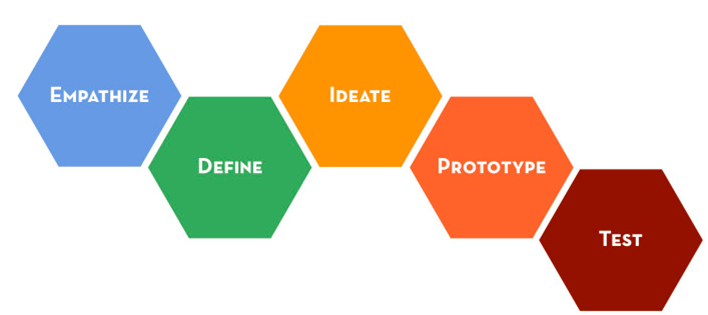Making accessible the creativity that designers typically practice in their jobs in order to allow anyone to innovate has fortunately become in vogue over the past few years. The unfortunate part is that rather than package this creativity in a friendly ‘Ages 2 and up’ box, it got called Design Thinking and simultaneously all designers looked up from their desks at this box and had no clue what it contained.
Why is this unfortunate you may ask?
At District 3, we’re champions of having everyone trust in their creativity in order to achieve their goals. We’re no less bemused than anyone else in our industry at this ‘Design Thinking’ terminology.
All of a sudden, designers had been given exclusive access to creative thinking and problem solving, forcing hundreds of organizations to consider their lack of a designers a problem rather than their lack of good, trusting, and empowering management.
This is explained best in the following quote from the article The Origins of Design Thinking that was on WIRED:
“All in all, design thinking has become a buzzword with certain expectations and assumptions. If design thinking is used as an organizational approach to creativity, it should not be different from logic — as creativity is the ability to make sense of new logic.” — Jeffrey Tjendra, WIRED
“…it should not be different from logic…” is exactly right.
If we examine a fairly simple and standard design thinking recipe, we find that it more or less is something like this:
- Empathise with and understand your customer by observing them and asking them how they feel
- Sit alone for a minute and think about what you just heard then come up with something, brainstorm with a group if you need to
- Make an object or diagram about your idea then ask your customer to try it and observe (seriously — just look at them, don’t say anything) if it solves their need → if the answer is yes, go to 4 else return to 1
- Take said object or diagram to your team and build it
This of course became lots of sexy things and got many fancy diagrams like this:

And this:

And this:

These things are all lovely, and they are quite helpful to explain the concept of design thinking, but if we look really closely at what they’re saying then think about an average night at home with a spouse, it might go something like this:
“Hey babe, are you hungry?”
Empathising
“Yeah, I could eat!”
Empathising
“I’m gonna order out, what are you in the mood of?”
Empathising
“Hmm… Maybe pizza? Or a salad… Though I am in the mood for pepperoni, but a chicken salad would be healthier…”
Empathising
“Okay, I’ll order pizza”
Defining
“Yeah that sounds good. Can it be pepperoni?”
Ideating
“Mmm… I was in the mood of Hawaiian”
Ideating
“Really?! Pineapple on pizza is gross though! Let’s go with pepperoni please.”
Ideating
“Okay, I’ll see if they do half and half”
Prototype
📞 “Hello Prince’s Pizza Place? Yeah do you do half and half pizza?”
Testing
📞 “You do?! Okay I’ll take half pepperoni, half Hawaiian”
Implementation
To most people that looks like an ordinary conversation, and a logical one at that. The reality is that we now have a solution that is informed by the customers and a whole lot of fighting and drama was avoided rather than if the conversation had gone like this:
“Babe, it’s 7:30pm and I’m hungry so I ordered us a Hawaiian pizza and it will be here in 20 minutes because it’s what I like”
That, quite simply, is mostly all there is to the core concepts of design thinking.
Unfortunately the latter situation is what a ton of companies and entrepreneurs do on a daily basis. The thinking is like “I know how to code with this awesome tech that works on my $4,000 gaming rig, and I like 6pt font so I’m gonna make a website with those specs to sell my seaweed protein powder with the natural flavour of gravel and dirt!”
If this person had simply asked some people what computer they had, how their eyesight was, and whether or not they’ve tried gravel and dirt in the past, it would have quickly validated some assumptions and saved a lot of time and money in development.
So, why “design”? Why not just call it “thinking”?
Our answer is “We don’t know any more than you do!”, but we have a hunch it has to do with buy-in.
See, with the dawn of an infinite amount of technical development, designers became tech hotshots overnigh
t, rising quickly from the status of “those guys that choose nice fonts” to “those guys that make shit people tap on and use constantly!”
From ergonomics to accessibility, from intuitiveness to functionality, designers were finally making a lot of decisions and management took notice. To get the top to hop on board the creative train, it became more useful to say “let’s do what those cool kids are doing!” as opposed to “let’s be reasonable, logical people and simply ask customers what they want or think” because that was the only way to get buy-in.
This is not to say that being creative or using “design thinking” is a cinch. It’s not. In fact, like any other non-technical skill — sales, negotiations, management, leadership, resourcefulness — creativity needs to be honed with time and practice. It is no different than any other human skill in that regard and it is not beyond anyone to access it.
But again, this is not a sexy enough pitch… thus the word “thinking” was dead, and in came the new king “design thinking”!
We had to go around this whole path, renaming something as old as time itself to get people’s attention so that we can finally get back to work…
And spend what is now easily over 100,000 collective hours trying to decipher this beast: Design Thinking.
